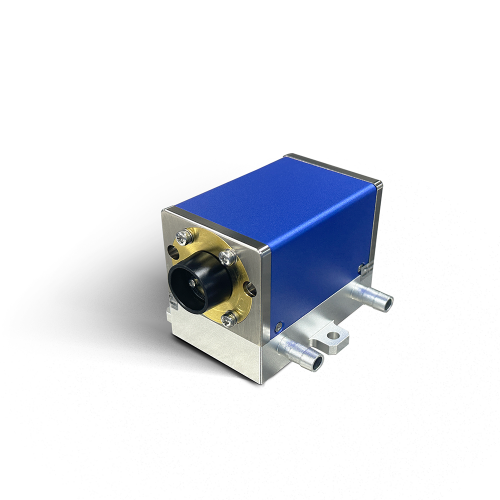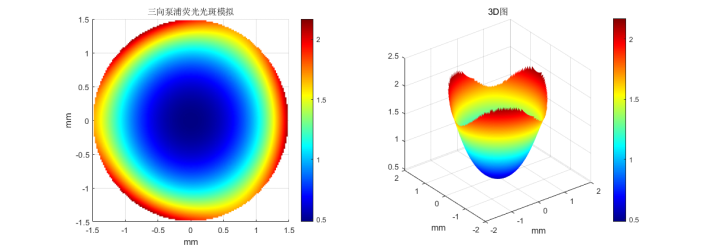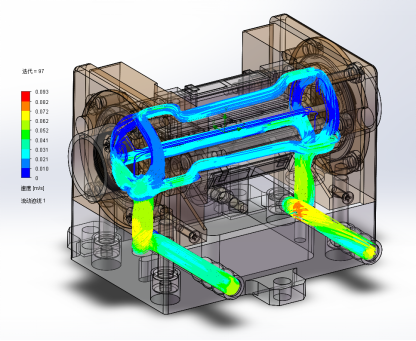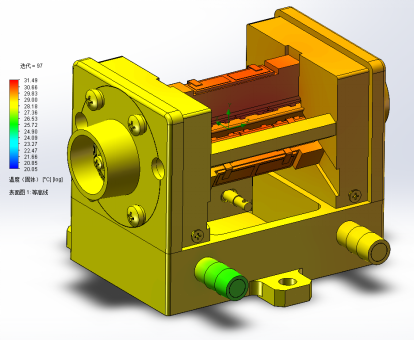Category: Laser Pump Update Time:2024/2/1
Laser pumping is the process of injecting energy into a laser medium to achieve a state known as 'population inversion,' essential for laser light production. In simple terms, think of laser pumping as 'fueling' a laser, providing it with the necessary energy to operate.
Apart from free-electron lasers, the fundamental working principle of solid-state lasers is the same. Key components include excitation (or pumping), a working medium with metastable energy levels, and an optical cavity.
Excitation is the process where the working medium absorbs external energy to reach an excited state, creating conditions for population inversion. Excitation methods include optical, electrical, chemical, and nuclear pumping. The metastable energy level of the working medium is essential for dominant stimulated emission, thus achieving light amplification. The optical cavity ensures that the photons within have consistent frequency, phase, and direction, contributing to the laser's excellent directionality and coherence.
DPSS (Diode Pumped Solid State) modules use Nd:YAG crystals, characterized by absorbing the 808nm wavelength and then undergoing a four-level transition to emit a 1064nm laser line. In standard continuous-output side-pumped solid-state lasers, the doping concentration of Nd:YAG crystals ranges from 0.6atm% to 1.1atm%.
Our company's DPSSL (Diode Pumped Solid-State Laser) modules typically use crystals with a doping concentration of 0.6atm%, with standard crystal lengths of 30-200mm and diameters of Ø2mm to Ø15mm. Generally, higher doping concentrations result in higher laser power output but poorer beam quality.
High-power semiconductor pumped solid-state lasers, using semiconductor solid-state laser materials as the working substance, represent a new type of laser. These lasers use semiconductor lasers with fixed wavelengths to replace traditional krypton or xenon lamps for pumping the laser crystal, marking a significant advancement and being termed as the second-generation lasers. These efficient, long-life, high-beam-quality, stable, and compact second-generation solid-state lasers have unique applications in high-tech fields like space communication, micro/nano-processing, atmospheric research, environmental science, medical devices, and optical image processing.
· Nanosecond/Picosecond Laser Amplifiers
· High Gain Pulse Pump Amplifiers
· Laser Cutting, Micro/Nano Processing
· Environmental, Meteorological, Medical Applications

Solid-state lasers require efficient, high-power pump sources for optimal performance. Semiconductor pumped solid-state lasers provide strong pump light power, effectively pumping the gain medium in solid-state lasers. Their high power output can produce very high average (or peak) powers, making them widely applicable in industrial, medical, and scientific fields.
These semiconductor pumped laser modules combine the advantages of continuous-wave and pulsed lasers, with one of the main differences being their power output.
Continuous wave lasers, also known as CW lasers, have a stable working state and emit continuous laser light.
Semiconductor pumped laser modules offer superb beam quality and stability, crucial for precise and controllable laser output. The design of the modules produces a clear and stable beam profile, ensuring reliable and stable pumping for solid-state lasers. This characteristic is particularly important for applications like laser material processing, laser cutting, and scientific research that require high beam quality.
The semiconductor pumped laser modules are compact due to their modular composition, easily integrating into existing solid-state laser systems. Their robust structure and high-reliability components ensure long-term dependability, minimizing downtime and maintenance costs. This reliability is critical for applications like industrial manufacturing or medical procedures that require continuous operation.
Learn More: What are the Characteristics that Determine the Effectiveness of Pumping Light?
Main technical specifications are shown Below:
· Bar Packaging Solder: Gold-Tin
· Center Wavelength: 1064nm
· Output Power: ≥55W
· Working Current: ≤30A
· Working Voltage: ≤24V
· Operating Mode: CW
· Cavity Length: 900mm
· Output Mirror: T=20%
· Water Temperature: 25±3°C
Each set includes 3 groups of horizontal array modules, each group providing approximately 100W@25A pump power, with a total pump power of 300W@25A.
Click To View Specific Product Indicators

Semiconductor pumped solid-state lasers are often used in quasi-continuous pulse (QCW) for high peak power output and continuous (CW) for high average power output.
The heat sink height and chip spacing (i.e., the thickness of the substrate and chip) significantly impact the cooling ability of semiconductor pumped solid-state lasers. Larger chip spacing results in better cooling but increases the product's size. Conversely, reducing chip spacing decreases the product's size but may lead to insufficient cooling. Designing an optimally compact semiconductor pumped solid-state laser that meets cooling needs is a challenging aspect of design.
Lumispot Tech applies finite element methods to simulate and calculate the device's temperature field. The thermal simulation combines solid thermal conduction steady-state heat simulation with liquid temperature heat simulation. Under continuous working conditions, as shown below, the product proposes the optimal chip spacing and arrangement under solid thermal conduction steady-state heat conditions. At this spacing and arrangement, the product not only has good cooling capacity and a lower peak temperature but also the most compact structure.


Our packaging process uses gold-tin solder instead of traditional indium solder, avoiding thermal fatigue, electromigration, and thermomigration issues associated with indium solder, thus enhancing product reliability and lifespan. With gold-tin solder replacing traditional indium solder while maintaining bar spacing, we improve product reliability and lifespan.
In the packaging technology of high-power semiconductor pumped solid-state lasers, indium (In) metal, due to its low melting point, small welding stress, ease of operation, and excellent plastic deformation and wettability, is widely used by manufacturers internationally as a welding material. However, for semiconductor pumped solid-state lasers under continuous working conditions, alternating stress can cause stress fatigue in the indium solder layer, leading to product failure. Especially under high and low temperature and long pulse width conditions, the failure rate of indium soldering is quite noticeable. Traditional semiconductor pumped solid-state lasers are mostly used under low pulse width conditions, limiting their lifespan.
Read More: What Problems Can Transient Thermal Management Technology Solve?
As the demand for solid-state lasers continues to expand across various industries, the need for high-performance pump sources like semiconductor pumped solid-state lasers is also growing. Precision applications in manufacturing, healthcare, defense, and scientific research rely on solid-state lasers. The market potential for semiconductor pumped solid-state lasers is enormous, presenting profitable opportunities for manufacturers and suppliers.
In conclusion, semiconductor pumped solid-state lasers, as key components of solid-state lasers, are driven by high-power pumping efficiency, CW/QCW operating modes, excellent beam quality and stability, compact design, and growing market opportunities. These modules play a crucial role in ensuring the efficient and reliable operation of solid-state lasers in various industrial, medical, and scientific applications.
Contact: Lumispot
Phone: +86-15072320922
Tel: +86-510-87381808
Email: sales@lumispot.cn
Add: Bldg 4 No.99 Fu Rong 3rd Road, Wuxi, China